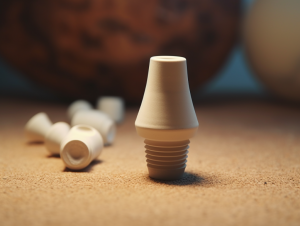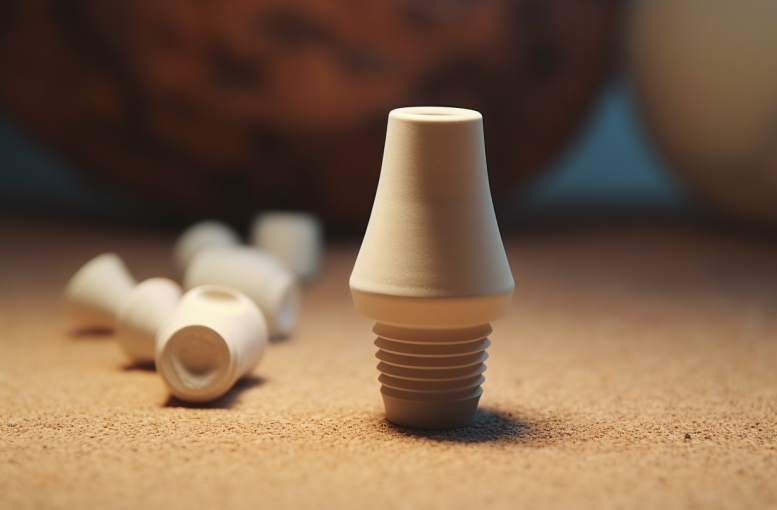Introduction
In recent years, biomedical engineering has witnessed remarkable advancements, particularly in the development of joint replacements. As the global population ages, the demand for reliable, long-lasting, and biocompatible solutions for joint problems increases. One material that has gained significant attention in this domain is zirconium oxide ceramic. Its exceptional properties make it a promising candidate for joint replacement applications, offering potential improvements in both functionality and longevity. In this article, we will explore how zirconium oxide ceramic is revolutionizing joint replacements and enhancing the lives of patients worldwide.
The Need for Superior Joint Replacements
Joint replacements, such as hip and knee prosthetics, have transformed the lives of millions, restoring mobility and reducing pain for those suffering from joint-related conditions like osteoarthritis. However, traditional joint replacements often utilize materials like metal alloys or polymers, which may present certain challenges.
Metal implants, typically made from materials like titanium, have been widely used for joint replacements due to their strength and durability. However, they can cause complications in some patients due to metal sensitivity or allergies. Additionally, over time, metal implants may undergo wear and corrosion, potentially leading to inflammation and discomfort.
On the other hand, polymer-based joint replacements might not offer the desired longevity and wear resistance needed for active individuals or those with higher physical demands. This is where zirconium oxide ceramic emerges as an intriguing alternative.
Zirconium Oxide Ceramic in Joint Replacements
Zirconium oxide ceramic is a ceramic material with exceptional properties that make it an ideal candidate for joint replacements. The material’s high strength, biocompatibility, and low friction coefficient set it apart from traditional options. When used in joint replacements, zirconium oxide ceramic provides numerous benefits:

- Biocompatibility: Zirconium oxide ceramic is non-toxic and biocompatible, minimizing the risk of adverse reactions in the human body. This characteristic makes it suitable for a wide range of patients, including those with metal allergies or sensitivities.
- Wear Resistance: Zirconium oxide ceramic exhibits remarkable wear resistance, significantly reducing the degradation of the implant over time. This leads to longer-lasting joint replacements, potentially sparing patients from undergoing revision surgeries.
- Low Friction: The material’s low friction coefficient ensures smooth and fluid movement between the articulating surfaces of the joint. This not only enhances the overall functionality of the implant but also reduces the generation of wear particles, contributing to improved long-term outcomes.
- Aesthetics: Zirconium oxide ceramic has a white, tooth-colored appearance that closely resembles natural bone. As a result, joint replacements made from this material offer a more visually appealing solution compared to traditional metal implants, which can be especially significant for younger patients or those concerned about aesthetics.
Clinical Impact and Future Prospects
Zirconium oxide ceramic joint replacements have already shown promising results in clinical trials and real-world applications. Patients who have received zirconium oxide ceramic implants have reported reduced pain, improved joint function, and increased satisfaction with the appearance of the implant.
However, as with any emerging technology, there are challenges to address. Manufacturing zirconium oxide ceramic implants with precision and consistency is one such hurdle. Researchers and engineers continue to work on refining the fabrication techniques to ensure optimal results and minimize the risk of fractures or other complications.
Conclusion
The integration of zirconium oxide ceramic in joint replacements marks a significant milestone in the field of biomedical engineering. With its biocompatibility, wear resistance, and low friction coefficient, zirconium oxide ceramic has the potential to revolutionize joint replacement procedures and offer patients a more reliable and long-lasting solution. As research and technology progress, we can anticipate further improvements in the design and manufacturing of zirconium oxide ceramic implants, paving the way for enhanced mobility and improved quality of life for individuals worldwide.
For more information about zirconia ceramic products, such as ZrO2 powder, tube, and rod, please visit https://www.samaterials.com/.
